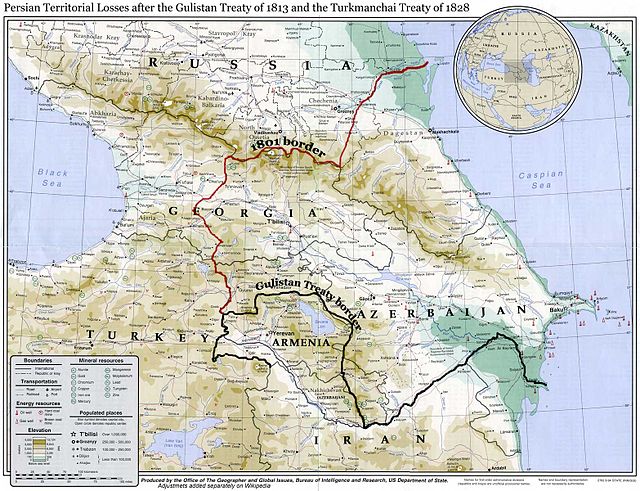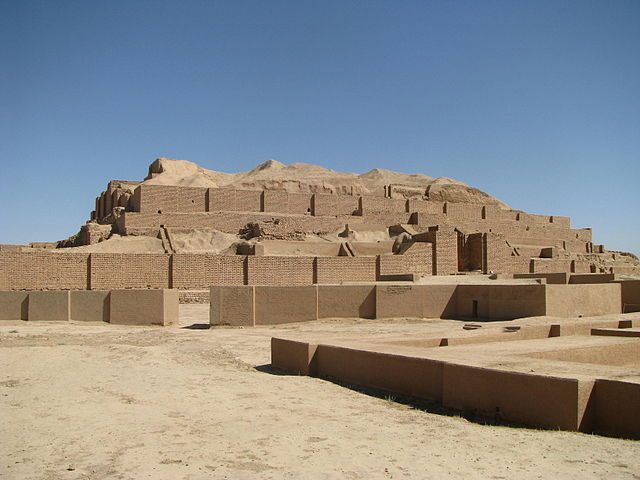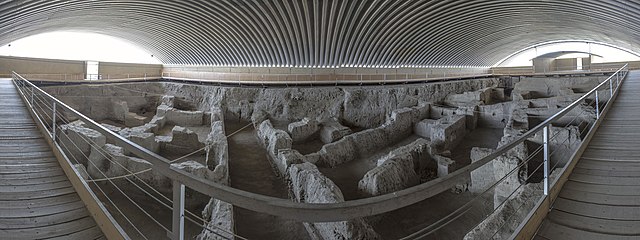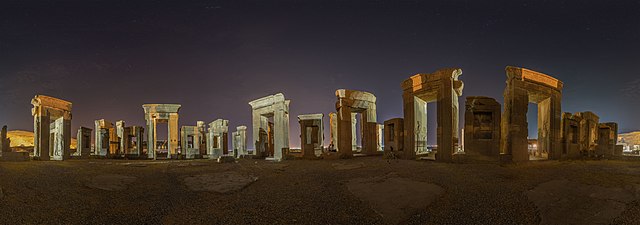The Russo-Persian Wars or Russo-Iranian Wars were a series of conflicts between 1651 and 1828, concerning Persia and the Russian Empire. Russia and Persia fought these wars over disputed governance of territories and countries in the Caucasus. The main territories disputed were Aran, Georgia and Armenia, as well as much of Dagestan – generally referred to as Transcaucasia – and considered part of the Safavid Iran prior to the Russo-Persian Wars. Over the course of the five Russo-Persian Wars, the governance of these regions transferred between the two empires. Between the Second and Third Russo-Persian Wars, there was an interbellum period in which a number of treaties were drawn up between the Russian and the Persian Empires, as well as between both parties and the Ottoman Empire. Ottoman interest in these territories further complicated the wars, with both sides forming alliances with the Ottoman Empire at different points throughout the wars. Following the Treaty of Turkmenchay, which concluded the Fifth Russo-Persian War, Persia ceded much of its Transcaucasian territory to the Russian Empire.

Shah Abbas I of Persia
Agha Mohammed Khan of Persia
First page of the Treaty of Turkmenchay
Persian territorial losses following the Treaty of Gulistan (1814) and the Treaty of Turkmenchay (1828)
Iran, also known as Persia and officially the Islamic Republic of Iran (IRI), is a country in West Asia. It is bordered by Iraq to the west and Turkey to the northwest, Azerbaijan, Armenia, the Caspian Sea and Turkmenistan to the north, Afghanistan to the east, Pakistan to the southeast, the Gulf of Oman and the Persian Gulf to the south. With a mostly Persian-ethnic population of almost 90 million in an area of 1,648,195 km2, Iran ranks 17th globally in both geographic size and population. It is the sixth-largest country entirely in Asia, the second-largest in West Asia, and one of the world's most mountainous countries. Officially an Islamic republic, Iran has a Muslim-majority population. The country is divided into five regions with 31 provinces. The nation's capital and most populous city is Tehran, with around 16 million people in its metropolitan area. Other major cities include Mashhad, Isfahan, Karaj, and Shiraz.

The well-preserved Inscription of Ardashir Babakan (224–242 AD) in Naqsh-e Rostam: "This is the figure of Mazdaworshipper, the lord Ardashir, King of Iran."
Chogha Zanbil (14th-13th century BC), an ancient Elamite complex in Khuzestan, built by Untash-Napirisha. UNESCO World Heritage Site.
Ecbatana (present-day Hamadan) was chosen as the first capital of Iran by Deioces in 678 BC, the founder of Medes Empire.
Persepolis, the ceremonial capital of the Achaemenid Empire (550–330 BC). It is one of the key Iranian Cultural Heritages.








